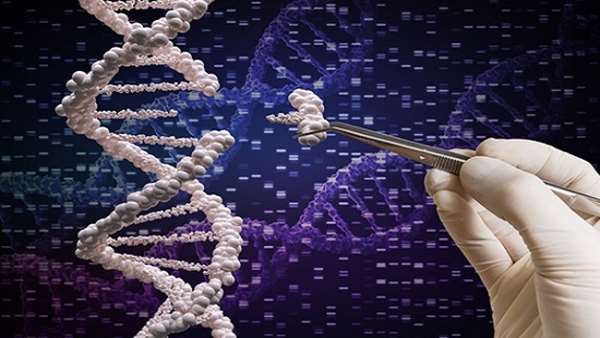New CRISPR Strategy Corrects Wider Range of Mutations Responsible for DMD
A new approach to CRISPR-Cas9 gene-editing technology, called myoediting, successfully restored dystrophin production and contraction force in heart muscle cells of Duchenne muscular dystrophy (DMD) patients.
A new approach to CRISPR-Cas9 gene-editing technology, called myoediting, successfully restored dystrophin production and contraction force in heart muscle cells of Duchenne muscular dystrophy (DMD) patients.
The new strategy, developed by U.S. and German researchers, targets sites located in “hot spots” of mutations along the dystrophin gene, allowing its editing and repair.
The study, “Correction of diverse muscular dystrophy mutations in human engineered heart muscle by single-site genome editing,” was published in the journal Science Advances.
DMD is associated with the degeneration of skeletal and heart muscle caused by more than 3,000 different mutations in the dystrophin protein, which is essential for correct muscle movement.
Up to 60 percent of those mutations occur in so-called hot spots of mutations along the dystrophin gene.
Researchers had previously shown that the genome editing method CRISPR could correct genetic defects that characterize Duchenne in mouse models and human cells. The CRISPR-Cas9 system, originally discovered in bacteria as a defense mechanism, allows researchers to edit parts of the genome by adding, removing, or changing specific sections of the DNA sequence.
However, due to the high number of mutations involved, a specific therapy would have to be developed for each mutation.
The novel CRISPR method, called myoediting, can modify DNA so that a wide region of mutation hot spots is skipped from the final dystrophin protein, potentially correcting the majority of DMD mutations.
“Not only did we find a practical way of treating many mutations, we have developed a less disruptive method that skips over defective DNA instead of removing it,” Rhonda Bassel-Duby, MD, co-author of the study from UT Southwestern Medical Center, said in a press release.
Researchers identified and targeted the top 12 DNA regions with hot spots of mutations that, when removed from the dystrophin protein, could potentially restore its function. Cultured cells from three DMD patients with representative types of mutations were myoedited with this approach, which efficiently restored dystrophin protein expression.
When the team grew a small piece of heart muscle tissue from the genetically modified cells (called engineered heart muscle, or EHM), it not only produced normal levels of dystrophin, but also beat at near-normal levels. Modifying only 30 to 50 percent of heart muscle cells was sufficient to restore their cardiac function to almost normal levels.
Researchers believe this method can be an effective therapy for DMD, as it eliminates the genetic cause and corrects the muscle and heart abnormalities associated with the disease.
“We’re hopeful this technique will eventually alleviate pain and suffering, perhaps even save the lives, of DMD patients who have a wide range of mutations and, unfortunately, have had no other treatment options to eliminate the underlying cause of the disease,” said Eric Olson, MD, the study’s senior author.
The team will continue to evaluate the efficiency of this method, along with its safety, before potential therapeutic application. They also think that the engineered heart muscle technique could be used as a preclinical tool to evaluate the efficiency of the therapy.
The new method has been licensed by Exonics Therapeutics, which will continue to develop the therapy for the treatment of DMD but also for other neuromuscular disorders.
Reference:http://advances.sciencemag.org/content/4/1/eaap9004.full





ارسال به دوستان